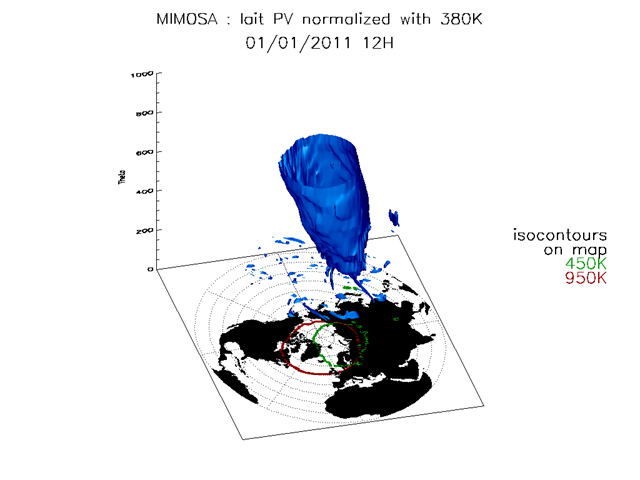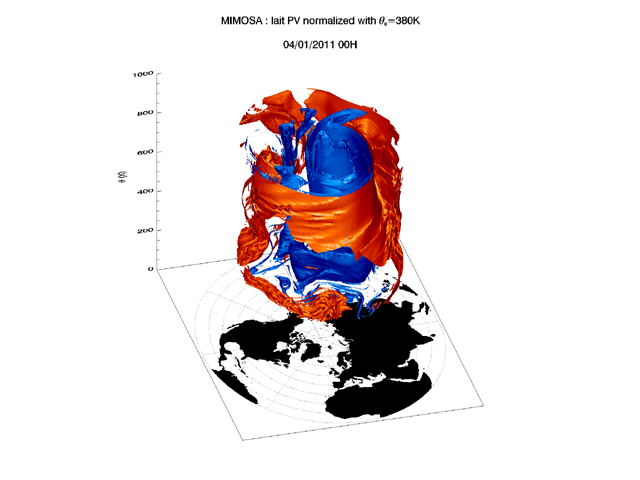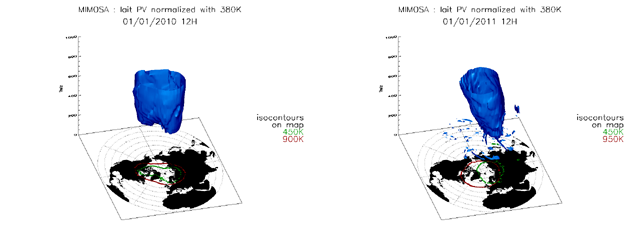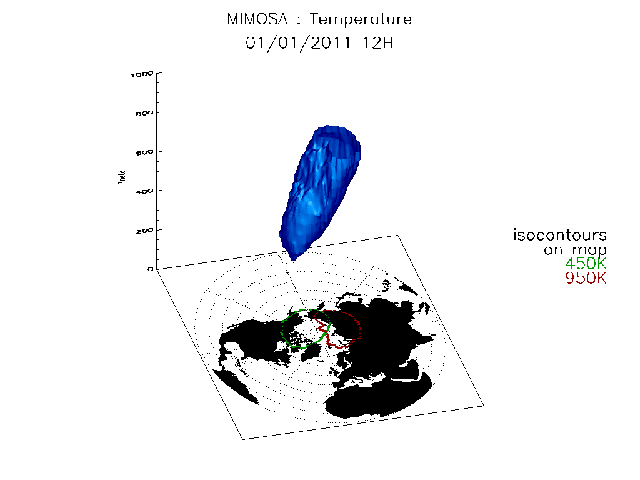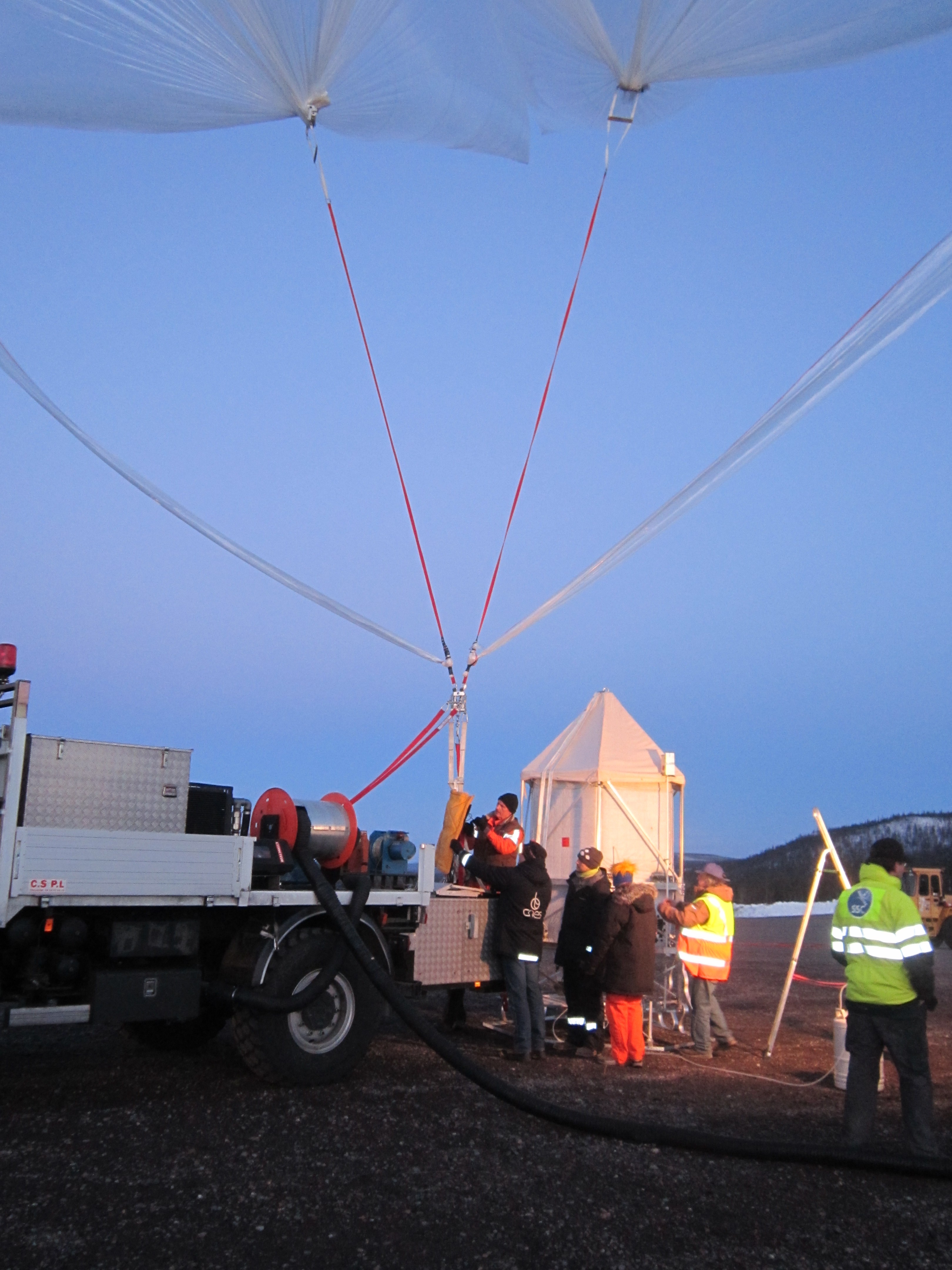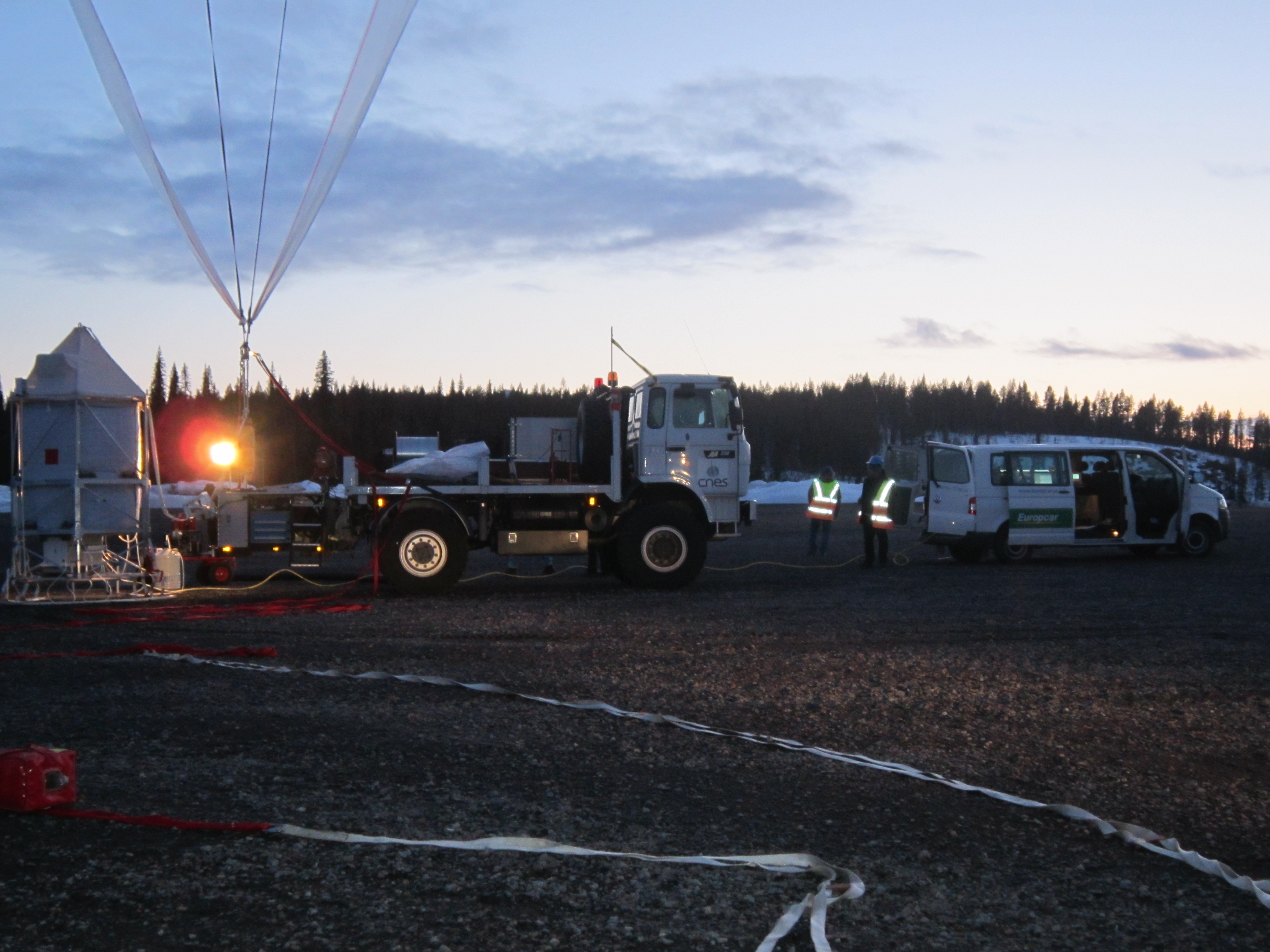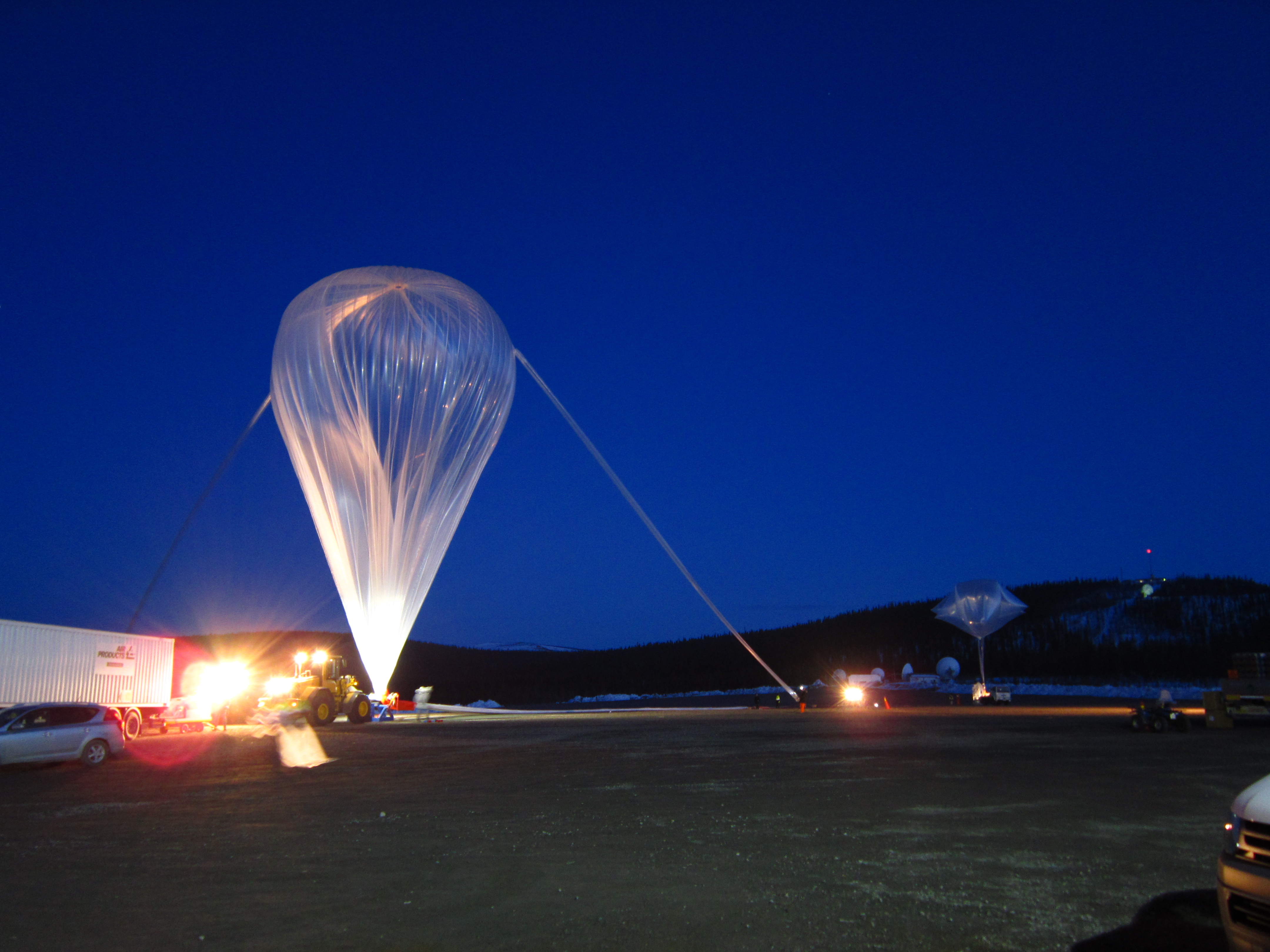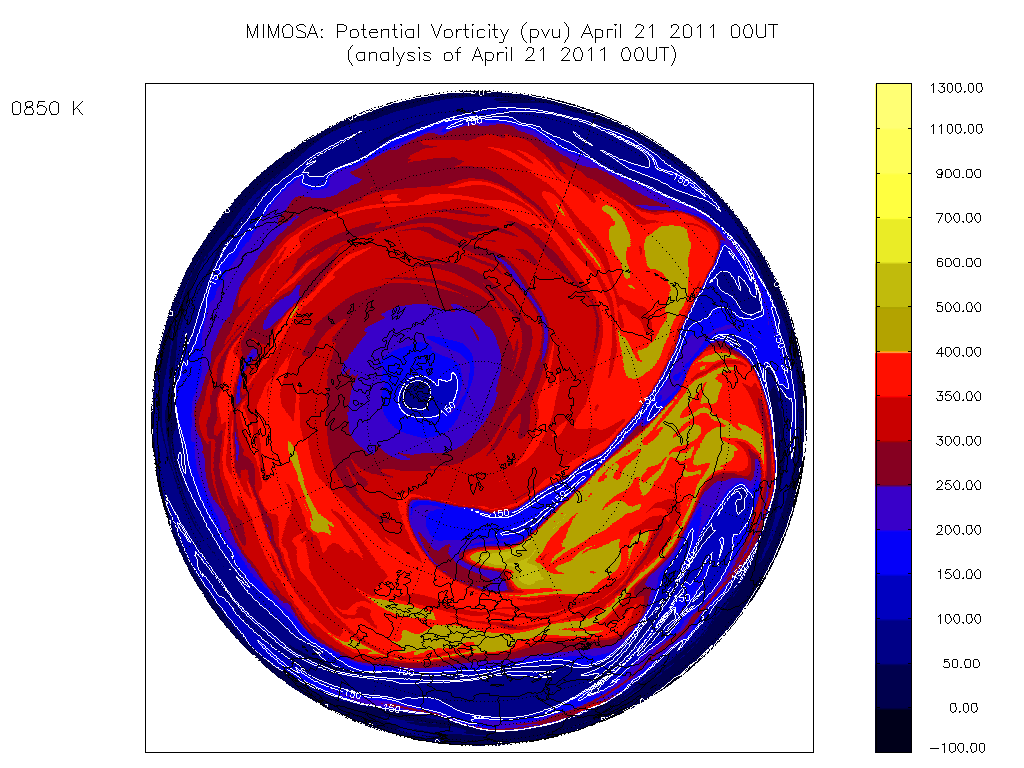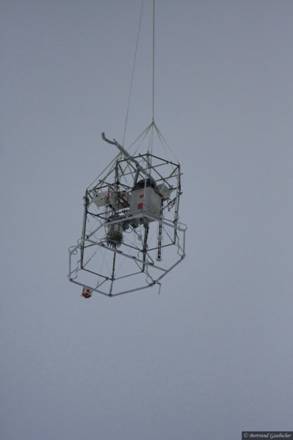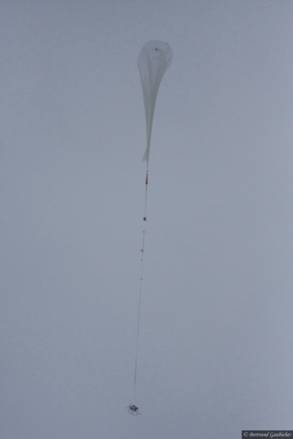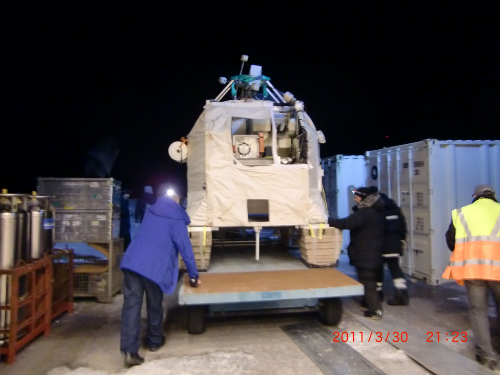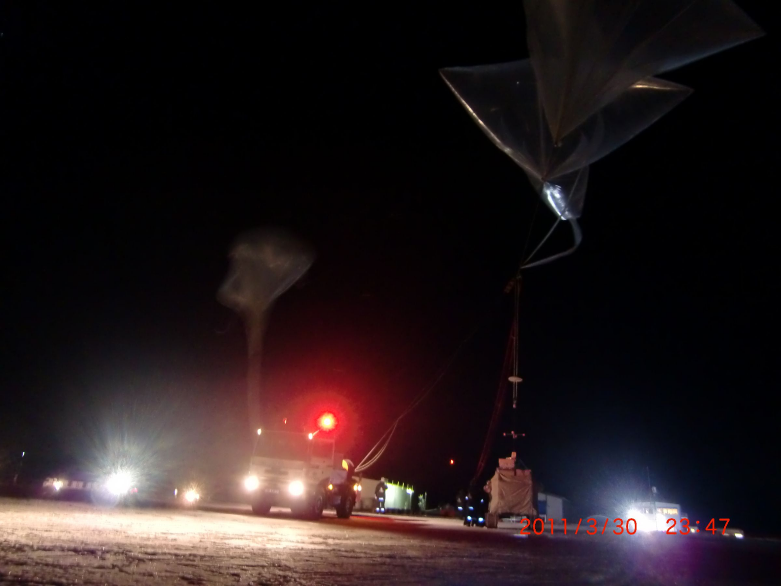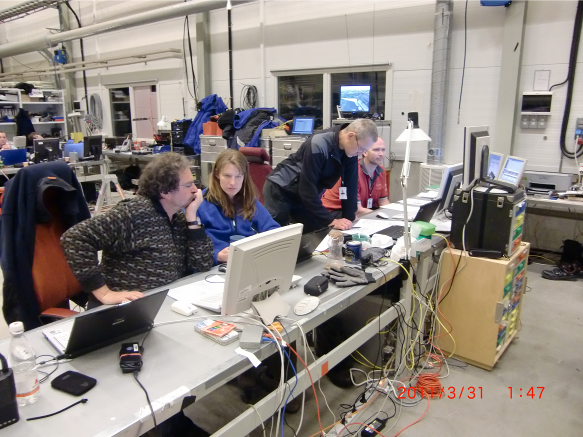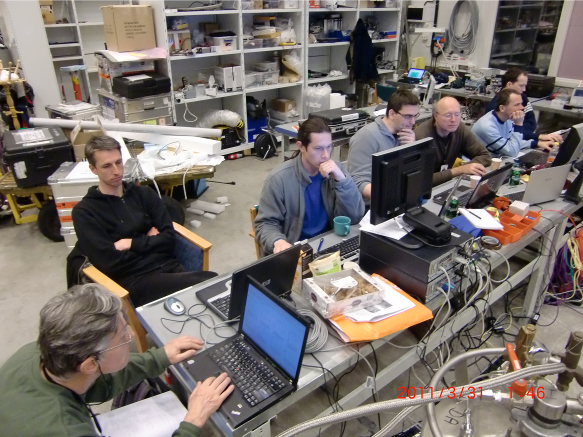News
| November, 15th 2012 |
| ENRICHED meeting 2012 |
|
The ENRICHED meeting 2012 took place at LPC2E on November 13th and November 14th. |
| November, 30th 2011 |
| Animations of 2011 Artic vortex |
|
The simulations were made using MIMOSA (Hauchecorne et al., 2002) model outputs. 2011 polar vortex
This video show the edge of the vortex between 380K and 950K 2011 FriaC
This video show the edge of the vortex (in blue) and the tropical intrusion (in red) between 380K and 950K Comparison of 2010 and 2011 vortex
This video show the edge of the vortex of 2010 and 2011 between 380K and 950K Temperature during 2011 Artic winter
This video show the volume of temperature below 195K during |
| October, 11th 2011 |
| AGU fall meeting 2011 |
| The AGU fall meeting 2011 will take place in San Francisco between December 5th and December 9th |
| May, 3rd 2011 |
|
Short report on th LPMA/DOAS/mini-DOAS gondola compiled by S. Payan |
|
The scientific flight LPMA/DOAS/mini-DOAS of the Enriched project
within the CNES 2011 campaign took place on Saturday April 23 with a launch from
Esrange (67.9°N, 21.1°E) near Kiruna and a balloon flight covering the
period from 5:00 UT to 9:20 UT.
The LPMA (Limb Profile Monitor of the Atmosphere) instrument is a Fourier transform infrared spectrometer operating in solar absorption and covering 4 spectral intervals between 14.3 and 2.4 µm (700 to 4130 cm-1) at a resolution of 0.02 cm-1 (corresponding to a maximum optical path difference of 50 cm). These intervals cover the spectral signatures (grouped by channel) of HNO3, O3, N2O, CH4; NO, H2O; NO2, HCl, CH4; HF, H2O. The solar radiation is fed into the interferometer by a sun-tracker, which is shared between LPMA and DOAS (see below). The sun-tracker plays a very important role (together with the primary azimuth control of the gondola, which is operated by the CNES team "Nacelles pointées") since it is allowing solar pointing during ascent, at float before sunset or at sunrise. During the present flight (also called LPMA26), ascent and a short float were achieved. Real time telemetry data showed that the recorded stratospheric spectra will ensure (by proper inversion of the data) reliable mixing ratio profiles of the listed species, which will document the spring polar stratosphere in the framework of the Enriched project. The DOAS (Differential Optical Absorption Spectroscopy) instrument observes direct sunlight in the UV and visible spectral range. Measurements were taken during the ascent of the balloon and at float. The main targeted species were O3, NO2, and BrO. One important return from the joint flight of these two instruments, which are collecting solar radiation sharing exactly the same atmospheric path, will be the direct comparison of slant columns of O3 and NO2. Another aspect of this balloon mission is the study of the diurnal variation of photo-chemically active species NO2 and NO. In addition to the two instruments discussed above, OSKAR a versatile UV/visible DOAS spectrometer was also deployed on the gondola and observed scattered sunlight in the limb scanning mode, offering the advantage of recording the diurnal variation of the profiles of the targeted trace gases. The final cut was commanded by CNES balloon operations at 05:00 UT. The recovery of the payload was performed in Sweden quite south from the Esrange perimeter. No worrisome indication on the health of the gondola and of the instruments was given by the recovery team. Many thanks to all peoples that made this flight possible. |
| April, 22nd 2011 | ||||||||
|
Short Report on the SPIRALE/OFCEAS gondola Compiled by V. Catoire on behalf on
|
||||||||
|
The third balloon flight of the "ENRICHED" project campaign took place on
Wednesday 20 April 2011 from 20:35 to 00:08 UT (22h35-02h08 local time) on the Swedish Space
Corporation (SSC) base at Esrange (67.89°N, 21.08°E) near Kiruna (Sweden). The launch and
flight were operated by CNES using a balloon size of 150000 m3 for a gondola weight of 520 kg.
SPIRALE/OFCEAS gondola consisted in two instruments: (i) the infrared absorption spectrometer with six laser diodes SPIRALE (SPectrométrie InfraRouge par Absorption de Lasers Embarqués), which performed in situ measurements of trace gases (O3, CO, OCS, CH4, N2O, NO2, HNO3, HCl) from 9 km to 34 km height, and (ii) OFCEAS (Optical Feedback Cavity Enhanced Spectroscopy) which simultaneously performed CO and CH4 in situ measurements from 0 to 14 km altitude. During the countdown of the balloon launch, SPIRIT instrument, a miniaturized replica of SPIRALE, has been operated at ground for simultaneous measurements of CH4 compared to OFCEAS. The whole dataset of the three instruments should thus lead to reliable complete vertical profiles from 0 to 34 km altitude with few meters of vertical resolution. MIPAS-Envisat satellite overpass at 20:26 UT (orbit #47787) at less than 300 km of the SPIRALE-OFCEAS gondola location should enable validation work of the O3, CH4, N2O, NO2 and HNO3 species. One of the main scientific objectives of the flight was to track a large tropical intrusion developing above Scandinavia in the stratosphere from about 25 to 35 km height (see the figure below) during the night of 20 April. Another goal of the flight was to make the link with the two previous flights from MIPAS and TWIN in the vortex by observing the mixing between polar air and mid-latitude air in the lower levels (15-25 km). Due to safety constraints, the measurements were possible only during the slow ascent, lasting about 2h30, from 21:00 to 23:30 UT. The gondola touched down at 00:08 UT (2h08 local) at 66.47°N, 18.87°E. The recovery of the payload was performed by SSC at 185 km southwest from Esrange base in the morning of the following day, with no damage on the scientific instruments.
|
| April, 5th 2011 | ||||
|
Short Flight Report of the TWIN flight on 1 April 2011 Compiled by A. Engel, Goethe University Frankfurt, Germany and F.Stroh, Forschungszentrum Jülich, for the BONBON, HALOX-B, pico-SDLA Teams |
||||
The scientific balloon flight of the TWIN payload in the ENRICHED project was
launched by CNES on Friday, April 1 from Esrange (67.9N, 21.1E) near Kiruna at about 16:30
local time in order to investigate the chemical and dynamical state of the polar vortex.
After a short ascent of about 1.5 hours the balloon reached a maximum altitude of close to
24 km (22.5 hPa) and then went directly into a valve controlled descent at a rate of about
4 m/s. This reduction in ceiling altitude was necessary in order to allow for a flight
under the given meteorological conditions (high wind speeds at the edge of the polar vortex
and a southerly direction) which took the balloon rather far south into more inhabited
regions of Finland. The payload was brought back to Esrange on April 4 and no unusual
damage occurred on the instruments.
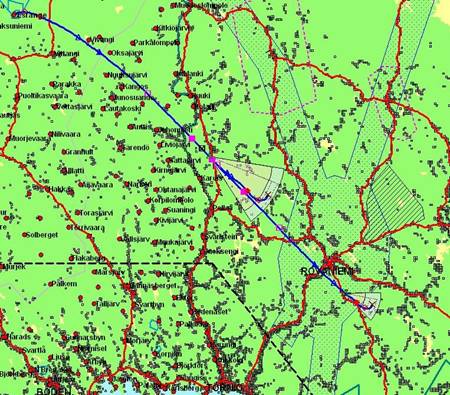
Predicted trajectory of TWIN, which was quite similar to the actual trajectory The TWIN gondola is a joint French-German payload carrying two German and three French instruments. The whole air sampler BONBON is operated by the Goethe Univeristy Frankfurt, Germany and collects up to 15 air samples which are analysed after the flights in several European laboratories (University Frankfurt, University Heidelberg, University Utrecht (the Netherlands) and University of East Anglia (United Kingdom)) for a wide range of trace gases and isotopes of trace gases. HALOX-B is an instrument to measure reactive chlorine species (ClO, BrO, ClO Dimer and ClONO2) which is operated by the Forschungszentrum Jülich in Germany. The University of Reims in cooperation with CNRS institute INSU supplies two Infrared spectrometers for high resolution measurements of CH4 and CO2. HALOX-B worked nominally during the flight. First results indicate that significant levels of ClONO2 were present in the part of the vortex probed by our flight. ClO seemed to be rather low just except for a few minutes where obviously a filament was probed. Extensive laboratory recalibration is necessary in order to quantify the results. No results from the whole air sampler BONBON are available yet, but the instrument worked nominally according to our telemetry results and a visual inspection showed that all opening and closing devices were activated. The balloon flight has been the second out of four planned within the scientific project ENRICHED that is managed by Nathalie Huret (LP2CE/CNRS, Orleans/France) and Hermann Oelhaf (IMK/KIT Karlsruhe/Germany) and funded by CNES/CNRS, DLR/German Space Agency, and basic funds of the involved scientific institutions.
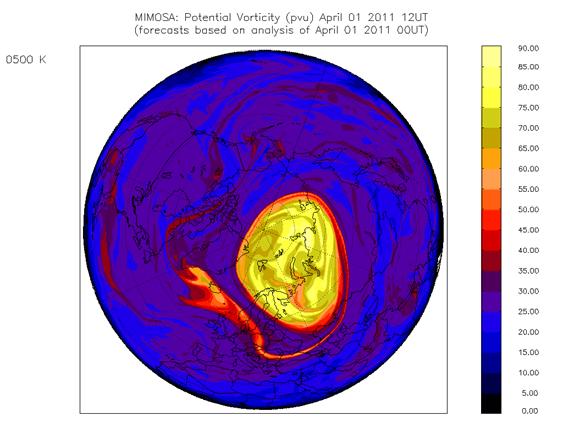
Meteorological situation: PV forecast by MIMOSA (Hauchecorne et al., 2002) for the 500 K potential temperature level.
|
||||
| April, 4th 2011 |
| Press release |
| A press release entitled "Record ozone loss in the north pole" has been made on the CNRS web site. You can read it on the CNRS web site by following this link. |
| April, 3rd 2011 | ||||||||
|
Short Report of MIPAS-B/TELIS/mini-DOAS flight on 31 March 2011 Compiled by H. Oelhaf, KIT Karlsruhe, Germany, for the MIMPAS/TELIS/mini-DOAS Team |
||||||||
|
The scientific balloon flight MIPAS-B/TELIS/mini-DOAS embedded in the
ENRICHED project was launched by CNES on Thursday March 31 from Esrange (67.9N,
21.1E) near Kiruna at 0:46 local time. After a long ascent the balloon reached a
maximum altitude of 35.4 km. It was cut at 7:00 local time after about 2:40 min at
float and touched down in Russia at 7:40 local time. The payload was recovered on
April 1 and transported to Murmansk by helicopter where the customs clearance is
prepared for ground shipment back to Esrange.
The multi-instrument MIPAS payload with a total weight of 740 kg consists of the three instruments MIPAS-B (a limb emission FTIR spectrometer), TELIS (a limb emission µwave and sub-millimeter radiometer), and mini-DOAS (an UV/Vis spectrometer). The unique combination of sophisticated remote sensing instruments covering spectral regions from the UV to the microwave is capable of measuring more than 30 atmospheric chemically-active and long-lived species that are relevant for ozone loss and climate. All instruments have worked nominally. The scientific team comprises scientists and engineers from six institutes in Germany (KIT/Karlsruhe, DLR/Oberpfaffenhofen, IUP/University of Heidelberg), the Netherlands (SRON/Utrecht), the UK (RAL) and Russia (CAO/Moscow). The balloon flight has been the first out of four planned within the scientific project ENRICHED that is managed by Nathalie Huret (LP2CE/CNRS, Orléans /France) and Hermann Oelhaf (IMK/KIT Karlsruhe/Germany) and funded by CNES/CNRS, DLR/ German Space Agency, and basic funds of the involved scientific institutions. 
Scientific objectives The overall scientific aim of the ENRICHED balloon flights is to investigate the atmospheric chemistry and dynamics connected to ozone depletion and climate change. A better understanding of climate-chemistry interactions and underlying processes is needed to predict the future climate more reliably. The MIPAS/TELIS/mini-DOAS payload is capable of measuring more than 30 chemically active as well as long-lived species day and night. This allows e.g. to follow the diurnal variation of short-lived species for proving kinetic data used in numerical models. The specific scientific objectives of the MIPAS/TELIS/mini-DOAS flight have been three-fold: The primary goal has been to measure the time-dependent chemistry of chlorine and bromine, and to achieve the closure of chemical families (NOy, Cly, Bry, HOx) inside the polar vortex. The second goal has been validation of ENVISAT, particularly the atmospheric chemistry instruments MIPAS, SCIAMACHY and GOMOS. Last but not least, the many species measured in common by the different instruments on the same gondola in different spectral regions will be used for cross comparison of the instruments and for evaluating the quality of the spectroscopic data bases. 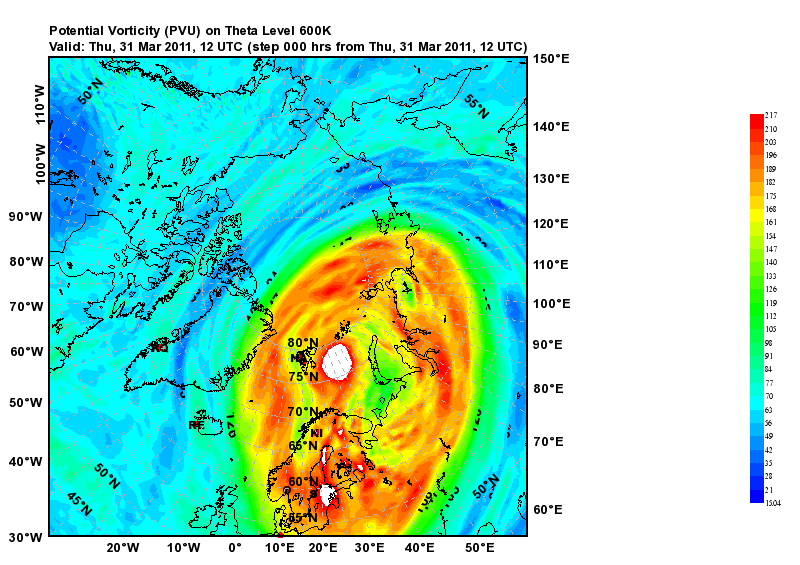
First evaluation of the flight All measurements during this balloon flight were done inside the polar vortex. A complete 360° scan for tangent altitudes between 6 and 27 km was accomplished by MIPAS at reduced spectral resolution to evaluate the homogeneity of the vortex around the balloon with a circle of a few hundreds of kilometres. Air masses towards North (centre of vortex) and towards South (towards the vortex edge) were probed by all instruments with high temporal resolution. Thanks to the meteorological situation and the timing of the balloon operations, enabling more than 4 hours of measurements, the following tasks could be achieved:
From a quick-look of the spectra we can qualitatively summarize that already large amounts of ClONO2 were present and only little ClOx was left. This indicates a much faster deactivation of chlorine than simulated by available numerical models. Acknowledgments The balloon flights within the ENRICHED project are funded by CNRS/CNES, following a Call for Proposals released in spring 2010. The German Space Agency supported travel and campaign running cost of the German teams. We thank the CSTB and CNRS/CNES for extending the 2nd campaign phase which has finally enabled vortex flights of MIPAS and TWIN. We are grateful to the excellent operations by the CNES balloon team and the efficient ground support by the hosting SSC. Special thanks go to the MIMOSA (ETHER database, special products provided by LPC2E) and CLAMS (FZJ, Germany) modelling teams, and the DLR Oberpfaffenhofen (Andreas Dörnbrack), who altogether supported the decision process and the scientific flight planning with very valuable modelling products based on ECMWF analyses. Read More The CNES balloon campaign http://www.ssc.se/cnes-campaign-2011.aspx The MIPAS web site http://www.imk-asf.kit.edu/english/533.php
|
| March, 28th 2011 |
| Newsletter |
|
GENERAL INFORMATIONS: Exceptional geophysical conditions in Artic Polar region this winter-spring 2011
Fact is that the vortex has been always centred over the North Pole, highly isolated from mid latitudes and very cold. Never within the past 20 years the cold areas have persisted that long. By today (March, 28th 2011), the polar vortex is:
We already know and we can see (probably) record low ozone The four Stratospheric Balloon scientific payloads (TWIN, MIPAS, LPMA, SPIRALE) involved in the ENRICHED project are waiting in polar region (Kiruna, Sweeden) to investigate such exceptional Arctic stratospheric conditions. Geophysical conditions at the moment The average temperature is reasonably cold (-10 degree Celsius) and the snow is blown by the wind. But we had some short periods of clear sky when the sun was shining and more inspiring than the frequent low cloud cover. We are still inside the vortex (widely speaking), but we do not see it or feel it! STATUS ON CAMPAIGN ACTIVITY (related to the CNES balloon campaign) IN ESRANGE Scientific and technical activities are keeping participants busy as usual in these types of campaign. ENRICHED project The TWIN payload which performed in-situ measurements (cryostatic sampler BONBON, HALOX-B and direct Infra-red ansorprion picoSDLA) and the pointing MIPAS payload which performed remote sensing measurements by infrared emisssion (MIPAS, TELIS) and UV-visible absortion DOAS and will be ready to flight on the 30 March. TWIN team Pis: A. Engel, F. Stroh, N. Amarouche MIPAS-B/TELIS/mini-DOAS Pis : H. Oelhaf, F. Friedl-Vallon A. De Lange, M. Birk, M. Dorf, K. Pfeilsticker The two teams arrive today at Kiruna. The objecives of their flights are to sample the exceptional vortex conditions (Ozone, Chlorine, Bromine, Nitrogen Oxyde as well as tracers, N2O, SF6, CO2, CH4,...) The LPMAA team arrived Sunday evening and started unpacking on Monday 21st March. The tests of the LPMA (Limb Profile Monitor of the Atmosphere) Fourier transform spectrometer are ongoing. The team consists in Claude Camy-Peyret (PI), Pascal Jeseck (instrument manager), Yao Té (calibration, science), Isabelle Pépin (technical support), Christian Rouillé (electronics), Patrick Marie-Jeanne (mechanics) and Jennifer Da Costa (flight software). Work is progressing normally. The "Nacelles pointées" team from CNES/Toulouse arrived Wednesday night and started their preparation Thursday. The engineers involved are Frederi Mirc (team leader), Pierre Tapie (software) and Nicolas Bray (mechanics). SPIRALE team from LPC2E (Orléans) and LSP (Grenoble) will arrive on the 4th of April to provide in-situ measurements with very high vertical resolution (5m) of O3, long lived species (N2O, CH4, CO) as well of short live species (Nitrogen oxides Chlorines) (SPIRALE instrument). The payload has onboard the LSP instrument OFCEAS (CO, CH4) for validation-calibration. PIs : V. Catoire, D. Romanini Other events planned on Esrange SSC base The micro-Radibal team (Frédérique Auriol and Christian Verwaerde) also arrived Wednesday and started checking their payload Thursday. The Texus 49 rocket campaign is still waiting for better ground conditions (too much wind for a launch). Everyone is hoping for a flight opportunity as soon as possible so that rocket and ballon do not collide! |
| March, 17th 2011 |
| Newsletter |
|
The geophysical conditions in the Arctic this year are exceptional and very
similar to what is normally found in the Antarctic.
Fact is that the vortex has been always centred over the North Pole, highly isolated from mid latitudes and very cold. Within the past 20 years it has never occured that the cold areas have persisted that long By today (17 March 2011), the polar vortex is:
The four Stratospheric Balloon scientific payloads (TWIN, MIPAS, LPMA, SPIRALE) involved in the ENRICHED project are waiting at Esrange/Kiruna (Sweeden) for good launch conditions. Thanks to the large suite of parameters to be measured with these instruments they are perfectly suited to investigate such exceptional Arctic stratospheric conditions. |
| March, 2nd 2011 |
| 20th ESA symposium on European Rockets and Balloon Programmes |
|
The 20th ESA symposium on European Rocket and Balloon Programmes
and Related Research will take place between the 22nd and the
26th of May in Hyères, France.
You can access the symposium website using this link. |
| January, 5th 2011 |
| Balloon campaign |
| First period for ENRICHED flights will be between the 6th of February and the 21st of February. The second will be between the 4th of April and the 22nd of April. |
